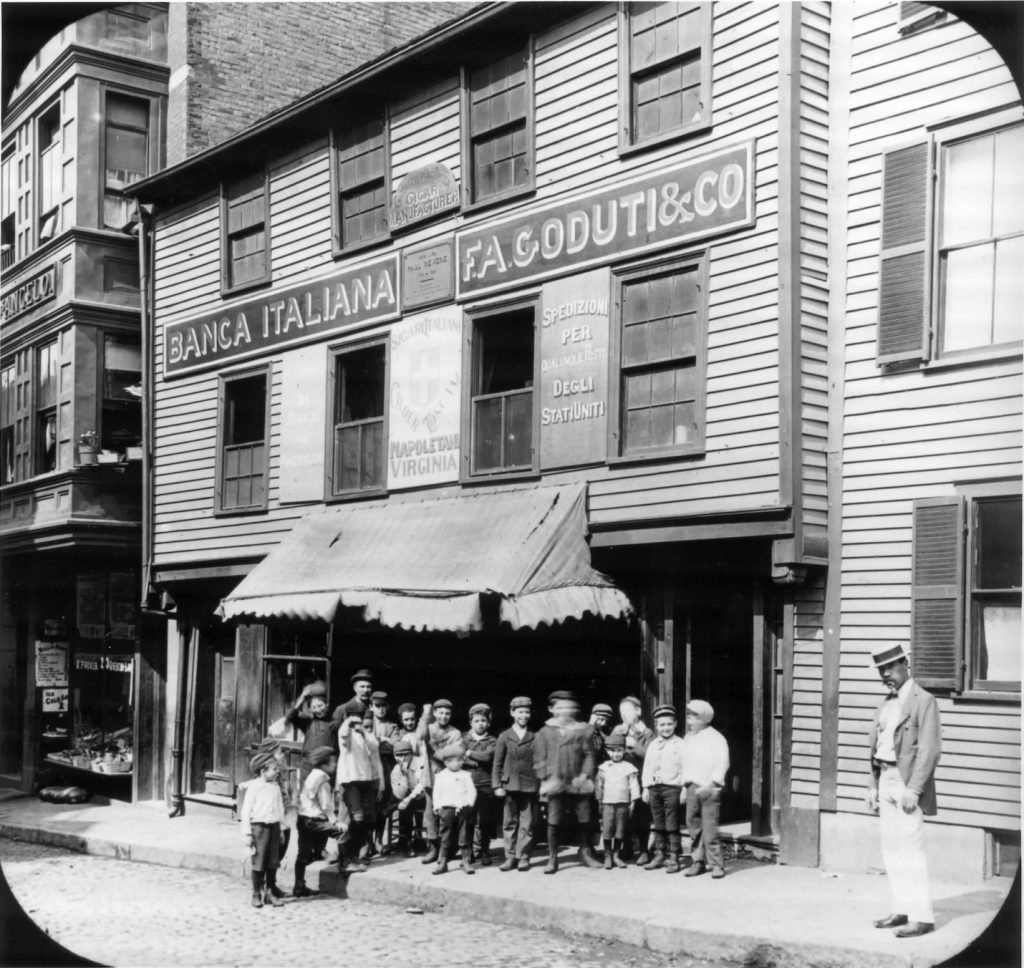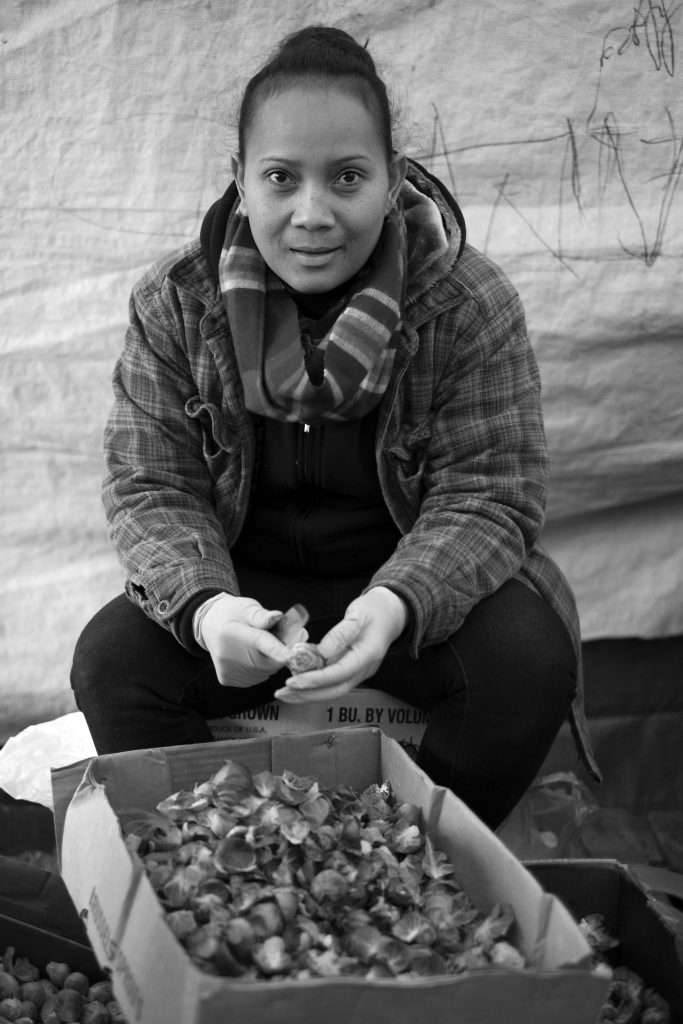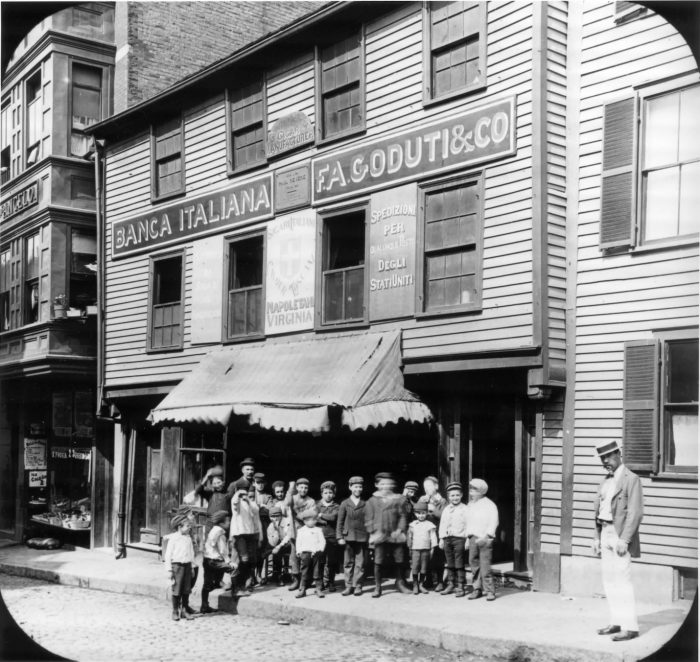
History museums of all types are facing the reality of a society where the meanings of inclusion, diversity, access, and equity are changing; the fact is, audiences are changing, too. The challenge of attracting and welcoming increasingly diverse audiences has proven particularly difficult for historic house museums, which have long been criticized—often with good reason—for having outdated, narrow, and static interpretation. According to an influential critic, the primary reasons people dislike house museums are that they present interpretation that lacks a connection to the present and feature stories of people who have nothing in common with most contemporary visitors.
Public historians and museum professionals have long known that historic sites need to be willing to change their structure, programs, and services in response to the changing needs of their communities. Yet, many have struggled to make these necessary institutional transformations. Encouragingly, solutions to these challenges lie within the very nature of house museums. Rather than focus on what is wrong with historic house museums, this essay explores the potential that house museums hold for telling new stories while making older, familiar stories more inclusive and relevant.
Opportunities for New Interpretations
Historic houses offer a broad canvas for the consideration of a variety of themes and for experimentation with new interpretive techniques. They provide the unique opportunity to share compelling stories in the most intimate of spaces, the home. They can, if allowed, reflect the lives of the many rather than just the privileged few.
While most historic house museums have become known for the tenure of a famous person or prominent family, or as examples of the work of a particular architect or representation of an important style or period, they possess much greater interpretive potential. These structures were built by people (native born, enslaved, or immigrant); they served as workspaces for owners and workers (enslaved or domestic); and, they provided a safe place where closeted lives were lived openly. They were the stage for many of life’s most poignant moments and relatable themes: birth, death, illness, education, foodways, and celebrations. Within the familiar context of living spaces, inhabitants from a wide range of economic situations and backgrounds moved in and out over many years. Although it is easy to fall into the trap of allowing interpretation to be held hostage to the legacy of one person or architectural feature, it is important to explore interpretive options that go beyond the expected. The prospect of doing so is intrinsically exciting and motivating for many public historians and museum professionals. However, if the promise of access to more compelling stories is not incentive enough, or the challenges seem too great, perhaps a more self-serving argument will make the case: interpretation and programming that resonate with a wider audience are simply good for business. Many museums have experienced improved attendance as well as buy-in from the community as a result of efforts to make interpretation and programming more inclusive.
Models of Inclusive Interpretation
There is no question that this sort of change, whether modest or dramatic, takes initiative and commitment. The good news is that more and more house museums are making the effort to reimagine and expand their interpretations; they are striving to find more inclusive stories to share the stage with “the elephant in the room” of the famous family or the institutional tradition of “the way things have always been done.” What follows are some examples of how organizations have changed the dynamic.
From its inception, President Lincoln’s Cottage in Washington, D.C., focused on making the past relevant to visitors. Its mission to “reveal the true Lincoln and continue the fight for freedom” is carried out in its interpretation, programs, and exhibitions, all of which seek “to inspire visitors to take their own path to greatness, and preserve this place as an authentic, tangible connection to the past and a beacon of hope for all who take up Lincoln’s unfinished work.” In this way Lincoln, the person, is transformed from a distant, romanticized hero into a call to action. Programs are offered that explore themes of injustice, division, and the importance of leadership. For example, an exhibition titled “American by Belief” introduces the public to the little-known fact that Lincoln championed policies that offered immigrants a chance to succeed based on the promise of the country’s founding principles.
For some time, the Harriet Beecher Stowe Center in Hartford, Connecticut, has been using its historic house to present and consider themes related to social justice. Its mission — “to preserve and interpret Stowe’s Hartford home and the center’s historic collections, promote vibrant discussion of her life and work, and inspire commitment to social justice and positive change”— makes the structure a container of ideas and thoughts rather than just a receptacle for interesting objects and famous figures. Through a significant reinterpretation effort and a reimagined tour that is described as “a conversational interactive tour where you can participate along with your guide,” all the house has to offer—stories, personalities, artifacts, and Victorian Gothic architecture—is used to promote discussion among visitors about social issues that resonate today. In this way, Harriet Beecher Stowe and her famous novel, Uncle Tom’s Cabin, have been transformed into even more effective tools for exploring the connections between past and present.
Another example of a dramatic shift in interpretive focus is the former Royall House Museum in Medford, Massachusetts. This high-style Georgian mansion was known as one of the finest colonial-era buildings in New England and it was precisely for this reason that the few hundred people who visited the house each year came. The interpretation was centered on the architecture of the home and the lives of the Royall family, loyalists who amassed great wealth in the triangular trade. The most compelling part of the story was the discussion of the lives of loyalists in New England where patriot stories generally rule.
What wasn’t discussed was the fact that the property included the only remaining slave quarters in the northern United States or that the Royalls were the largest slaveholding family in Massachusetts. The museum is now the “Royall House and Slave Quarters.” This name change alone alerts visitors that the story now gives equal weight to both the wealthy loyalist family and the enslaved Africans who made the Royalls’ lifestyle possible. The shift in perspective has transformed interpretation at the site and, along with programming relating the past to current issues, has helped the museum become more relevant and inclusive and has widened its audience considerably. In some ways, confronting the realities of slavery and the slave economy is more surprising in the North than it is in the South. Yet it is a crucial topic to explore and share with visitors.
Strategies for Implementation
Sound simple? Not in the least! When an organization like the Royall House Museum and Slave Quarters embraces the “what if we look into these other stories” epiphany, the true work has only begun. After much debate the museum’s board undertook a strategic planning process that resulted in a new mission and a new name. Careful consideration was given to how to make the case to board and staff, accomplish the necessary research, involve community stakeholders, and finally, how to prepare staff and volunteers to deliver these new stories to a surprised, or even resistant, audience.
What strategies should you employ to begin the process of making your historic sites more meaningful to all people?
Consider all the residents and consider the issues.
An initial step is to begin to give equal value to all the knowable moments in the long history of the home you run: How many families have lived or worked there? Who built the house or worked on the grounds? How might their stories be added to the current interpretation? What are the topics that meet your mission and are relevant to and can benefit your community? It was not a hard stretch for the Paul Revere House to begin shifting its interpretation by re-imagining one room as a reflection of the first owner of the house, a wealthy merchant in seventeenth- and early-eighteenth-century Boston who had at least one enslaved person supporting his lifestyle. Moreover, in the over 100 years after Revere’s departure from the residence, the house served as home to owners, workers, and tenants, many of whom reflected the change in the neighborhood as immigrant populations came into Boston’s North End and rented or acquired property. The stories that unfolded at the site during the mid nineteenth century included those of a single woman named Lydia Loring who supported herself through real estate deals and taking in boarders, and later, the Wilkies, an Irish couple, who ran the Revere House as a boarding house for sailors and had a saloon on the first floor.
In addition, for each resident it is important to consider what was going on in the neighborhood, the country, and the world at the time. How might themes, such as economic fluctuations, war, political or ethnic conflict, slavery, women’s rights and roles, LGBTQ rights, religion, and education, allow you to seamlessly expand your story and relate to how we view the same topics today? These avenues provide additional hooks to engage visitors in ways that go beyond the story of one house, person, collection, or architectural style. This type of analysis also offers different lenses through which to consider the life of even a well-known resident.
Involve your stakeholders and community.
If you are thinking of making a bold change or just a small one, it is imperative to work with your community. Arrange for opportunities to invite community members and key stakeholders to engage in open discussions about your ideas and to solicit their input before any plans are set. You may find you are overlooking some local sources of information, you may have inadvertently and unnecessarily stepped on some toes, or you may discover that rumors about what you are considering may be spreading and causing unwarranted concerns. Early buy-in from informed constituents may help you make the changes you seek. Or, if there are serious concerns or challenges ahead, it is far better to be prepared to address these issues than to be blindsided later in the process.

Cultivate meaningful partnerships.
Partnerships, if mutually beneficial, can show that your historic house is sincere about being more open to new ideas and welcoming to new audiences. Since one-time deals rarely produce deep and sustainable institutional change, working with other organizations in the community is essential. Historic New England regularly engages with diverse groups through its Everyone’s History program. One such effort, the Haymarket Project, involved a series of short films, an exhibition, and a publication, which documented the outdoor market’s rich immigrant history. Interviews with longtime Italian vendors, newer vendors from more recent immigrant groups, and customers, along with photographs—all collected over the course of a year—revealed the daily life at the market, changes over time, and the challenges of encroaching development. Through walking tours, which include many of the vendors telling their own stories, this partnership has endured beyond the initial programs.
Research, research, research.
Once you know what story or group you want to explore, you will need to do the necessary research. You may find that suddenly you are seeing things that you missed. A cone of sugar displayed innocently on a table in a kitchen is, of course, evidence of the owner’s sweet tooth but is also evidence of the impact of the slave economy in Paul Revere’s Boston.
Artifacts have multiple layers of meaning depending on what questions you ask. Collections, photographs, and archives have, in some cases, been subject to bias in how they were cataloged, so every effort should be made to look for information in unexpected places.
Jennifer Pustz, author of Voices from the Back Stairs, suggests including the stories of people who are underrepresented in written sources. She advises starting with what little is known and documented about the person in question and being honest about what is not known and why that might be (privacy, social class, etc.). Research about an individual or individuals can, with care, be supplemented with generic information that is appropriate to the period and area.
At Historic New England’s Beauport, the Sleeper-McCann House in Gloucester, Massachusetts, researchers used other sources, such as oral histories, to interpret LBGTQ history when pertinent records did not survive. Where possible, reach out to the descendants of the people, including servants and workers, who called your property home. You will most likely see them surprised and then thrilled that you care about their family story. The Revere House reached out successfully to the family of F.A. Goduti, who ran a cigar store in the house, after one of his relatives recognized him in a photograph in a display.
Archeological collections and reports along with newly initiated investigations provide important information. Excavations at the Royall House Museum and Slave Quarters proved a treasure trove for reinterpretation, while similar investigations at the Paul Revere House provided insight into the lives of the immigrants who called the property home during the nineteenth century. Find ways to include interns in new research. Over the years the Paul Revere House has not only encouraged interns to do research on the various immigrant groups that lived in the neighborhood, but also published their work as articles in its newsletter.
Seek assistance.
If the topics that emerge take you into unfamiliar territory, seek the assistance of trusted scholars or museum colleagues. Be mindful to include Native American scholars or specialists if you are researching your site for connections to indigenous peoples. The same holds true for research pertaining to racial, ethnic, sexual, and class identities as well as religious groups.
If board members, staff, or volunteers don’t understand the value of fleshing out the stories connected to either your famous moment or lesser-known episodes, include them in the process. Use strategic planning to explore the opportunity to reach new audiences with a new vision. Reach out to other house museums that have had success in making changes and ask for advice.
Build staff and board buy-in.
It is important to ensure that your board and staff reflect the community you serve. This kind of change requires institutional will. To involve people with your historic site, you may need to first show good faith by taking some programmatic risks in order to convince your community that your organization is truly embracing change. We are not saying this is easy and it does take time. In addition to including different racial and ethnic groups, welcoming new voices to the board or staff also means being more cognizant of age, gender, sexual orientation, and/or people with differing abilities. There are resources out there to help; MASS Action, is a central point for resources, learning, and communication between institutions engaging in promoting diversity, inclusion, equity, and accessibility. Its toolkit offers resources for use in creating greater equity within the museum field.
Visitors respond to seeing diversity in staffing. This shows that the organization reflects multiple perspectives and is open to a range of ideas. Historic New England advertises staff positions and internships in both traditional outlets and non-traditional sources. The organization offers paid diversity internships to students of color to encourage them to pursue careers in the field by promoting the program to schools and universities with substantial populations of historically under-represented and underserved students.
Conclusion
If historic house museums want to be relevant, inclusive, and diverse, they need to diversify their boards and staffs and work closely with their communities. House museums need to step back and look at the stories they are telling and the ones that remain unexplored. Whether at the Paul Revere House, where many of the changes have been real but subtle; or the Harriet Beecher Stowe Center, where a change in interpretive techniques now invites discussion; to the major change at the Royall House and Slave Quarters, which now gives equal weight to the interpretation of the enslaved population and the wealthy loyalist family: all have produced richer, more compelling stories. These varied tales of human experience offer visitors from all walks of life, ethnic backgrounds, educational levels, and lifestyles a way to see themselves in both the lives of the famous and of the less well known.
Suggested Readings
van Balgooy, Max A., ed. Interpreting African American History and Culture at Museums and Historic Sites. Lanham, MD: Rowman & Littlefield/AASLH, 2015.
Bench, Raney. Interpreting Native American History and Culture. Lanham, MD: Rowman & Littlefield/AASLH, 2014.
Ferentinos, Susan. Interpreting LGBT History at Museums and Historic Sites. Lanham, MD: Rowman & Littlefield/AASLH, 2015.
Forum on Historic Site Stewardship in the 21st Century. National Trust for Historic Preservation. 2007. https://forum.savingplaces.org/viewdocument/introduction-the-call-for-a-nation.
Gallas, Kristin L., and James DeWolf Perry, eds. Interpreting Slavery at Museums and Historic Sites. Lanham, MD: Rowman & Littlefield/AASLH, 2014.
LGBTQ Heritage Theme Study. National Park Service. https://www.nps.gov/subjects/tellingallamericansstories/lgbtqthemestudy.htm.
Pustz, Jennifer. Voices from the Back Stairs Interpreting Servants’ Lives at Historic House Museums. Dekalb: Northern Illinois University Press, 2009.
Rose, Julia. Interpreting Difficult History at Museums and Historic Sites. Lanham, MD: Rowman & Littlefield/AASLH, 2016.
Turino, Kenneth C., and Max van Balgooy, eds. Reinventing the Historic House Museum, New Approaches and Proven Solutions. Lanham, MD: Rowman & Littlefield/AASLH, 2019.
Authors
~ Kenneth C. Turino is Manager of Community Partnerships and Resource Development at Historic New England and Nina Zannieri is Executive Director of the Paul Revere Memorial Association.

